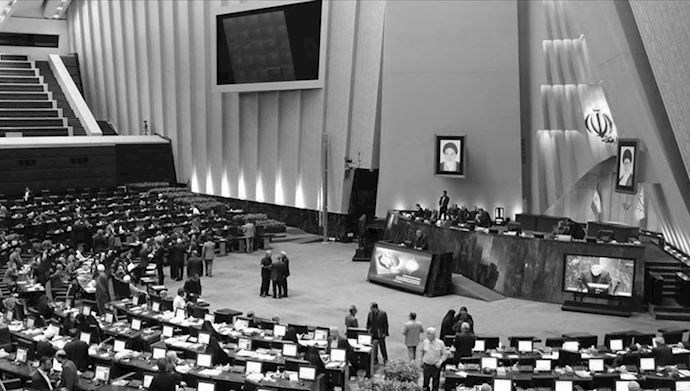Reporting by PMOI/MEK
Iran, June 8, 2020—The second week of the Iranian regime’s new legislature was marked with more infighting among officials of rivaling factions, something that has become a hallmark of the Majlis (parliament). But while regime officials were divided over many matters of state, they all agreed that the country’s economy is in shambles. Further driving the point was the presence of economy minister Farhad Dejpasand, who became the target of MPs for the underperformance of his government.
Dejpasand made it clear during the hearing session that even if oil prices return to their pre-coronavirus levels and the regime manages to export oil as before, the government will still need to rely on “other sources of income,” by which he mainly means taxes on the public.
In the current circumstances, however, more than 3 million people have lost their jobs due to the coronavirus pandemic, joining the ranks of Iran’s 7 million unemployed, and it’s not clear how the government plans to further impose taxes. Ali Asghar Anabestani, MP from Sabzevar, pointed out in the same session that, since 80 percent of government taxes come from income and value-added tax, further raising taxes will cause the collapse of production and further raise inflation.
Shamseddin Hosseini, another MP and former economy minister, mocked the Rouhani government’s lies, and after reminding the audience that in the past seven years, production had zero growth, he asked Dejpasand, “How can [regime president Hassan] Rouhani claim that he has created 1.8 million jobs? Why are you giving such stats?”
Why is Iran’s economy bankrupt?
Two parameters have exacerbated the poor performance of Iran’s economy: endemic corruption in the government and the coronavirus crisis. In a recent interview with the state-run Mostaghel Daily, MP Ghasem Mirzaei Nikoo expressed despair in the prospects of “this legislature or any other legislature, or any other institution” being able to do anything about corruption in the regime. Mirzaei Nikoo said, “When corruption is institutionalized, it becomes a multiheaded dragon. We’re just cutting off the legs, hands, and tail. The main body stays. The dragon knows how to heal itself and will find another entrance.”
Meanwhile, Dejpasand, the economy minister, acknowledged that the coronavirus outbreak has wiped off 15 percent of the country’s gross domestic product.
Is the regime headed in the right direction?
Iran’s economic woes were clear even before the coronavirus outbreak. The regime’s response, however, was to contract itself and to put more power in the hands of the military. Regime supreme leader Ali Khamenei has been talking about establishing a “young and hezbollahi” government as he is faced with international isolation, domestic unrest, and a crumbling economy. This policy has manifested itself in the structure of the new Majlis, which is largely constituted of former Revolutionary Guards commanders and is headed by Mohammad Bagher Ghalibaf, a former head of the State Security Forces.
Khamenei wants to have more control over the Majlis and government as he tries to steer his way through the multitude of crises that are engulfing his regime. Meanwhile, the economy will be one of his greatest challenges. This is one domain that is dominated by statistics and facts, and the regime’s lies and rhetoric will be self-defeating if they’re not backed by concrete action and tangible progress, especially at a time that public trust toward the regime is at a record low.
Also challenging the regime is the constant revelations made by the People’s Mojahedin Organization of Iran (PMOI/MEK), who have been constantly exposing the regime’s lies on all fronts, including the number of protesters killed by security forces in the 2019 uprisings and the number of people who have died of coronavirus in the country. The constant presence of the Iranian Resistance has prevented the regime from continuing its “lie therapy” and has revealed the true nature of the regime to the Iranian people and the world.
For instance, while the regime tried to blame international sanctions for its mismanagement of the coronavirus outbreak, the Iranian Resistance proved that the regime has more than enough funds and assets to support the people through quarantines, and if the regime’s leaders would allocate a fraction of what they squander on terrorism to solving the people’s problems, they wouldn’t need to reopen the economy and send the people back to work.
The bottom line is, a regime that is run by thieves and thugs will not be able to repair Iran’s broken economy, no matter how Khamenei arranges his showcase of MPs and government officials. As Hosseini, the former economy minister, confessed in an interview with the state-run Tasnim news agency, “Iran’s economy has stalled, the people are poorer than ever, the country’s statistics are baseless, budget deficits are constant, and the Majlis has no power.” Otherwise said, the regime is in a deadlock.





